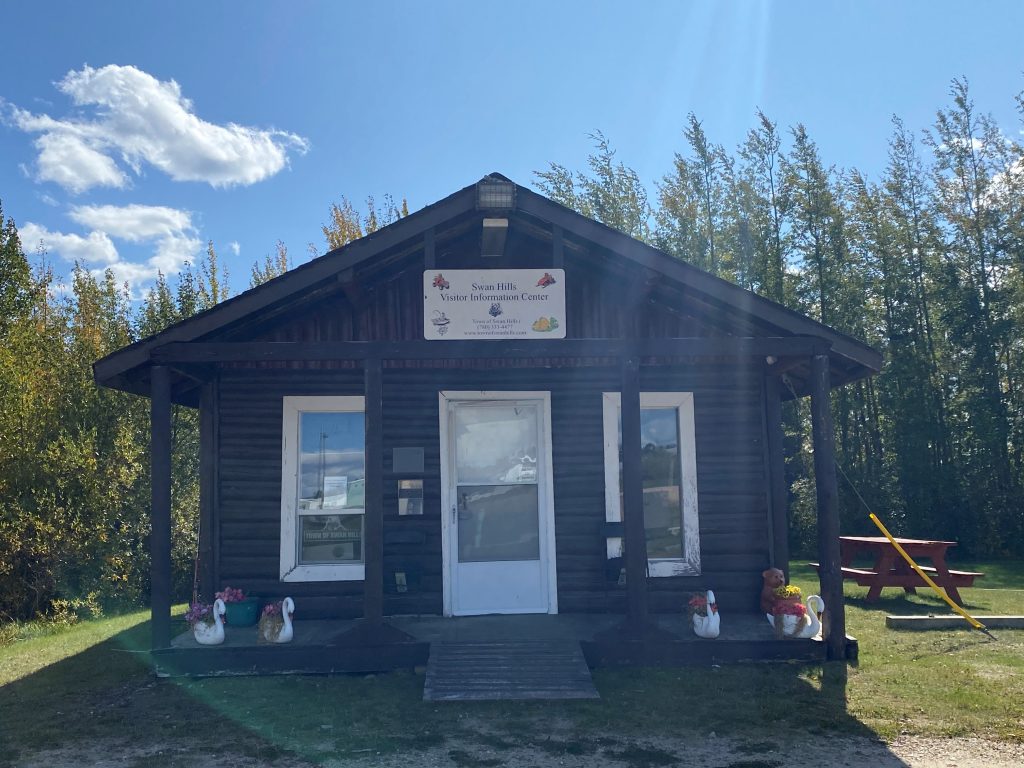Evelyn Millar Tourist Booth
The Officers Quarters at the Judy Creek Young Offenders Camp began its life as a part-time hobby for Corrections Officers stationed at the facility, but it grew into a permanent structure that served the camp for nearly seventeen years.
In the late 1960s, the Judy Creek facility was used as a minimum security camp for adult offenders. At this time, the three corrections officers assigned to Judy Creek lived and worked out of a small travel trailer, a structure too small and crowded for their needs.
These officers, Tom Brown, Lloyd Goodwin and Harold Riggs, decided to do something about their quarters. They began designing a log cabin.
Work on the structure that was to be approximately 16 feet wide by 32 feet long began during the first week of May, 1970. Goodwin and Riggs worked at designing and managing the project while Brown, the youngest member of the staff, looked after the physical construction. Strictly a part-time project, construction of the cabin was carried out during weekends and on days off. The cabin was completed at the beginning of October 1970.


The cabin is constructed of spruce and lodgepole pine logs, all of which were harvested within a quarter mile of the cabin site. With the aid of inmates, Brown would fall the logs and tow them to the construction site using a 4-wheel drive pick-up truck.
Once at the site, the logs would be peeled and cut to length. The cabin was not constructed using the traditional cut and groove method, but instead was built by piling the logs and then spiking them to 2” X 10’ posts.
To provide proper insulation, fiberglass strips were used to chink between the logs. The fiberglass was then held in place by nailing wooden slats over them. To act as additional insulation, six to eight inches of sawdust gathered during the cabin’s construction was spread above the cabin’s plywood ceiling.
The fiberglass, the plywood for the ceiling, the roofing shingles, and the nails used by the officers were the only non-native materials used in the cabin’s construction. One estimate placed the cabin’s entire construction cost at less than $300.00, not counting the electrical and heating systems that were later installed.
After the main construction was completed, windows and doorways were made by simply cutting holes into the cabin’s sides. The original trailer used by the officers was later pressed into service as a tool shed.
In March, 1987, when the Judy Creek camp was closed, the logs of the cabin remained firm. They showed no sign of decay with the exception of one base log which had begun to rot away. The cabin was then donated by the Alberta Solicitor General to the Town of Swan Hills for use as the Tourist Information Booth.
The Evelyn Millar Tourist Booth is open during the summer months. The RV sewage dump station and potable fill water station is located here. You can find brochures of other Alberta Communities and you also can stock up on all of your Swan Hills souvenirs here as well!
